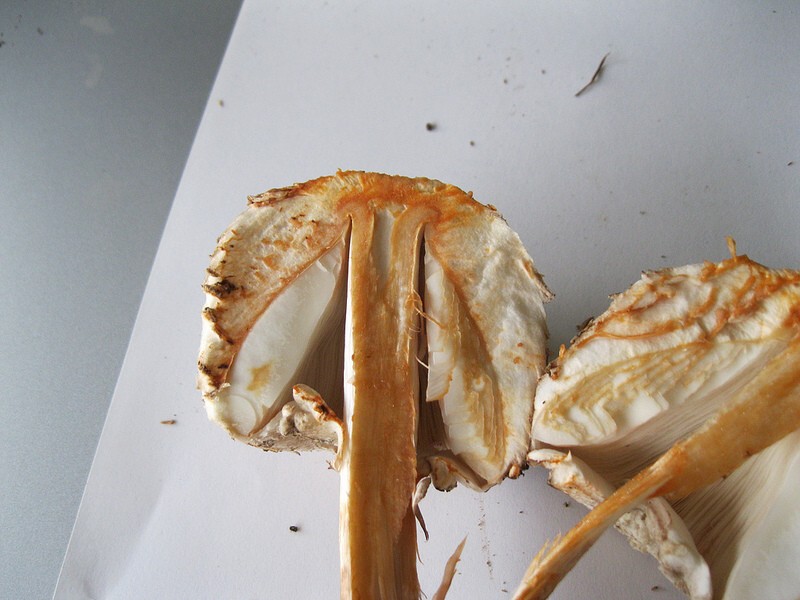Lepiota
Posted by Elmer 5/25/12 --- Scroll Down to see the Discussion


Can anyone tell what this is? Is it a Lepiota?
It was growing on the ground in a woody area under firs .
The cap has shaggy scales
Bottom of stalk is thick but no bulb or outer veil around the stem
gills are not attached to stalk
Note the spores are not white but I could not get a very good spore print.
Richard T: I'd say you're on the right track.
Lisa: I think that you are on the right track as well.
At first glance it looks like L. rachodes (now Chlorophyllum rachodes)
by it's overall appearance, size, and especially due to it's extensive
orange staining.
However- the spore print is clearly not white!
So
instead of being the choice edible rachodes, perhaps it is the
poisonous Chlorophyllum molybdites,
with greenish spores?
I was
reading that these typically do not stain,
or they stain orange/
reddish slowly.
Other thoughts?
Elmer: The spore print was not greenish.
I wondered about that and I had Joan check the color.
She agreed that it was not green --
we both thought it was red-ish brown -
could that be because the spores were very young -
The spore print was very light.
Also looking at the spores in the microscope, they appeared brownish .
Is the color of the spores when one looks at them in the microscope of relevance
or does that color come from the vagaries of the microscope.
Dick B: I'm wondering if the reddish color of the spore print could
actually be staining from the gills or other tissues?-
Mike P: After some thought on this,
I came to the same question as Dick.
In North Carolina -- but not necessarily in photos from California --
C. molybdites (with olive-green spores) has a squatter stature
than C. rhacodes or Macrolepiota procera.
Possibly more to the point, the habitat of C. molybdites
is listed as grassy areas.
(see, e.g., http://www.mushroomexpert.com/chlorophyllum_molybdites.html
but you found your specimen in the woods.
Click on a thumbnail below to enlarge the image

















